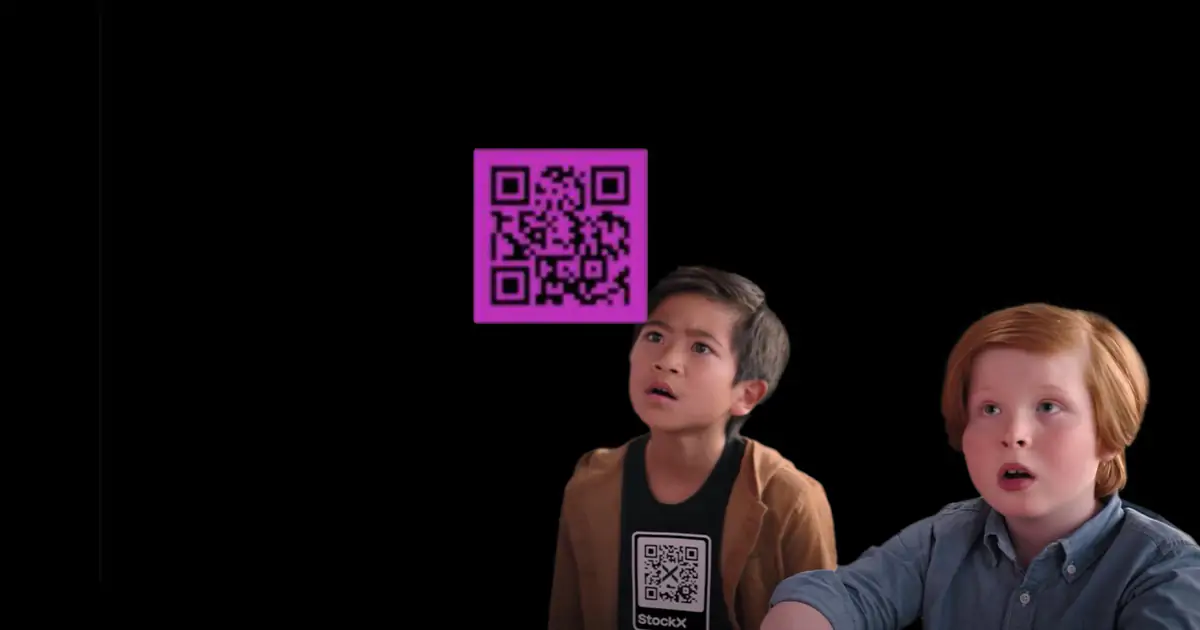When a bright-colored square floated on people’s TV screen on Super Bowl Sunday, some viewers might have rolled their eyes, but they weren’t confused. More than 20 million people knew to direct their phones toward their TV screens and let the QR code set up a Coinbase account for the chance of redeeming around $15 worth of free bitcoin, briefly crashing the site.
TV—and especially the growing area of connected TV—is the latest advertising format to seize on the QR code gold rush, spurring companies to launch new QR code-based products. Ad tech and media buyer sources told Adweek that advertiser interest in QR code TV ads has been growing since late last year, though the three Super Bowl ads with QR ads certainly stoked curiosity. For advertisers, these are an opportunity to drive conversions and measure notoriously opaque connected TV audiences. Yet the tech has its limits.
“I don’t think I’ve had a single meeting with a client or a creative team where someone didn’t bring up if we should add a QR code,”
said David Mirsky, group director at MMI Agency, who advises brands on media buys.
It’s been a while coming. QR code usage surged in popularity as a result of the pandemic and is projected to keep growing. In fact, 83.4 million U.S. smartphone users will scan a QR code in 2022, a 10% rise from last year and a nearly 59% increase compared to 2019, according to Insider Intelligence. Quickly adopted by the restaurant industry to avoid passing viral germs from menu to menu, QR codes started to find new use cases in out-of-home advertising and experiential retail.
The QR code-gold rush
Mirsky’s clients have been inquiring about adding QR codes to their creative assets since at least the third quarter of last year, he said. He recommends them as a more efficient call-to-action on TV ads than existing methods, like phone numbers or catchy URLs. “It allows us to track and see if someone is impacted enough to take an action,” he said, noting that they are especially fitting for CTV ads, where younger-skewing audiences understand the technology better.
While QR codes will likely soon overtake phone numbers as the dominant way for driving engagement on TV ads, TV—even aided with QR Codes—will never generate the same engagement as made-to-click display ads, he added.
Ad exchange Sharethrough launched a beta product to help companies add QR codes to their CTV ads in February, which will launch in full in April. The company pursued QR codes following positive conversations with clients in November, said chief product officer Curt Larson. “You have a phone in your hand. You have a TV in front of you,” Larson said. “It’s the only way you can bridge those two worlds.”
QR codes also are a privacy-safe way of measuring a campaign’s effectiveness, Larson said. Marketers don’t need to solve CTV’s thorny attribution problem to get valuable data from QR codes. They can get useful contextual data from knowing when and what show inspired a viewer to scan. However, while not as tricky as attribution, marketers don’t always know when their ad was served, said Method Media Intelligence CEO Shailin Dhar. Dhar said his clients are increasingly looking for QR code measurement solutions, further proving the heightened interest in the technology.
“All of our clients that buy CTV at a significant level have asked how the results from QR code engagement can be measured and tracked,” Dhar added.
Limits with the tech
Advertisers may be eager to append QR codes to their CTV ads but, despite their increased ubiquity, some audiences may find them jarring on a TV, said Amber Lockwood, VP of media sales at Rakuten Advertising, which includes ad-supported streamer Viki.
“Being able to actually do lower funnel versus more of a branding play with connected TV is a little more difficult because people aren’t quite as used to scanning a QR code on their TV,” Lockwood said.
Sharethrough’s Larson said that QR codes actually drive greater engagement, citing his company’s own research that CTV dynamic QR codes increase consumer attention by 12%. He said advertiser reticence toward QR codes is less about alienating audiences and more about whether the QR codes will ruin a creative asset.
Naturally, QR codes don’t make sense for every CTV ad, Mirsky said, especially when the creative is particularly visually stimulating. But for any advertiser looking to place a call-to-action in an ad, a QR code is a no-brainer.
“If a consumer sees phone number, you’ve already diluted your experience,” Mirsky said. “What’s the difference between the phone number that takes more steps versus a QR code that takes a viewer [somewhere directly]?”
Source: adweek.com

